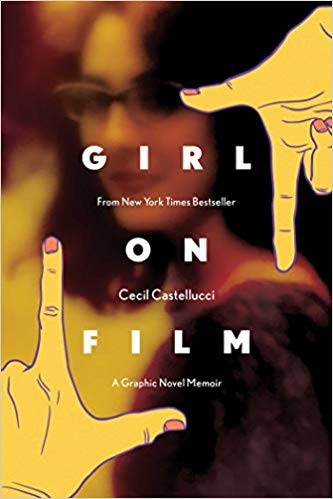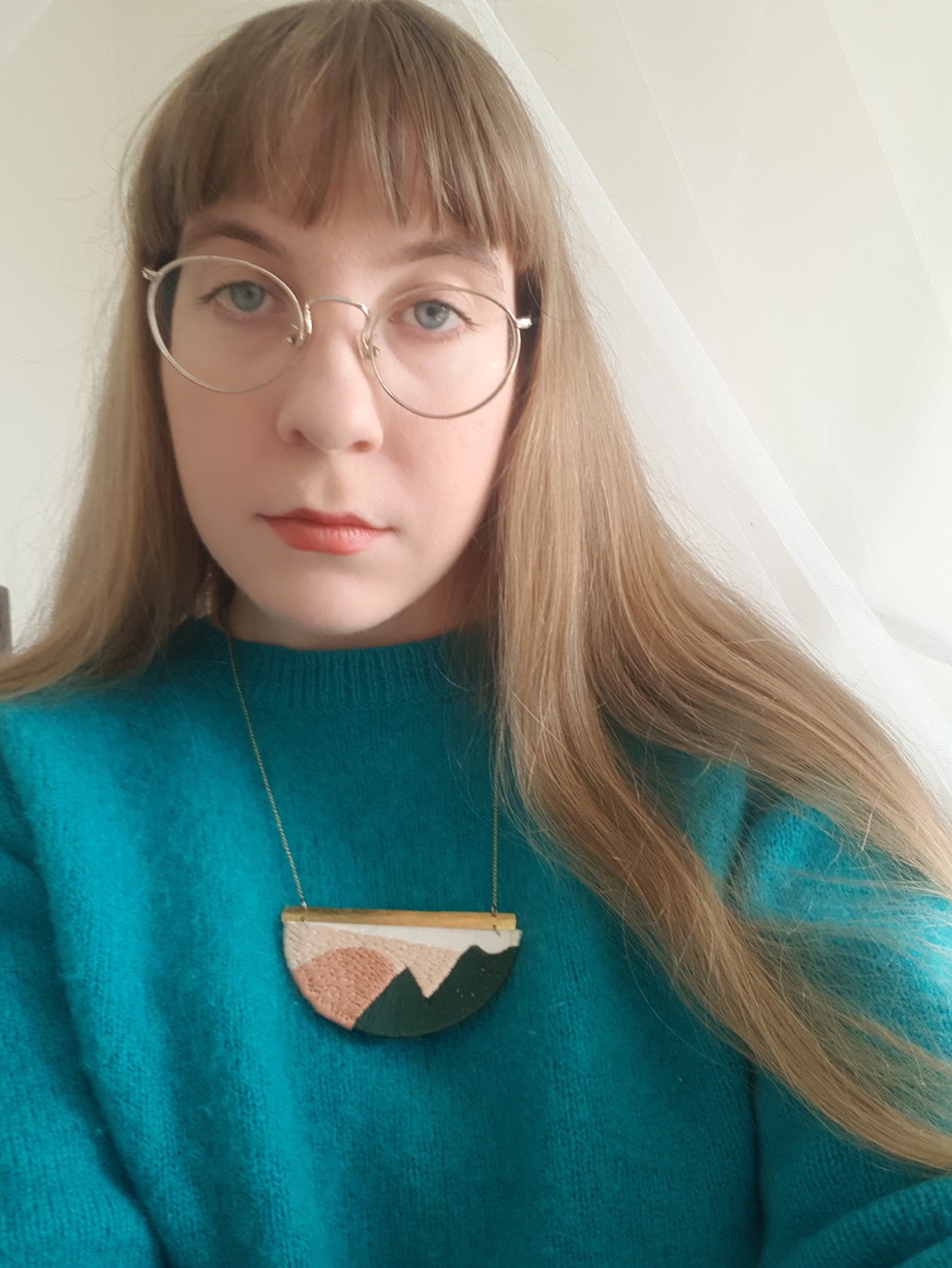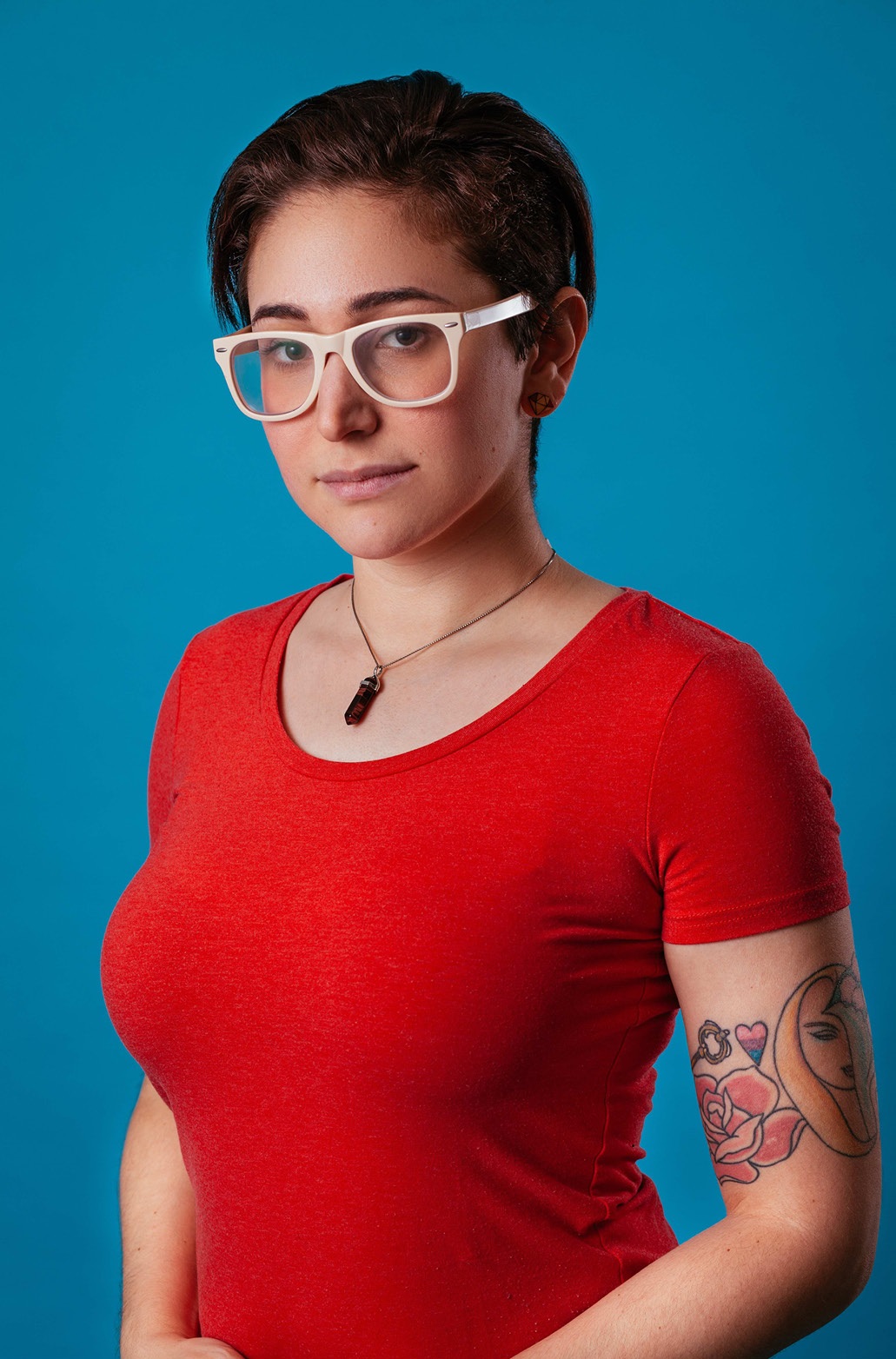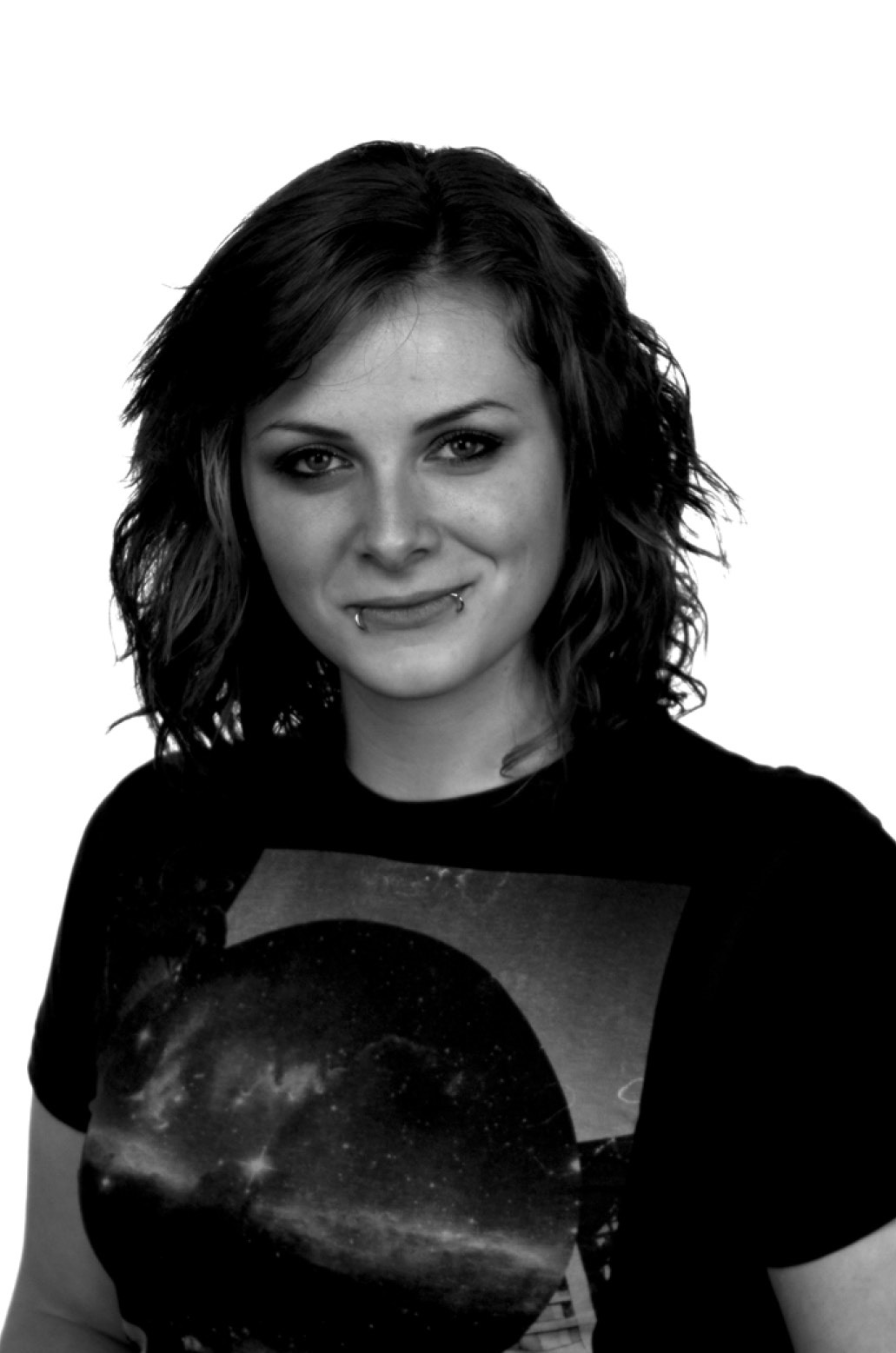BOOM! Studios
 With support of the publisher, Shelf Awareness celebrates BOOM! Studios and some of its outstanding fall graphic novel titles that push the boundaries of traditional genres.
With support of the publisher, Shelf Awareness celebrates BOOM! Studios and some of its outstanding fall graphic novel titles that push the boundaries of traditional genres.
 With support of the publisher, Shelf Awareness celebrates BOOM! Studios and some of its outstanding fall graphic novel titles that push the boundaries of traditional genres.
With support of the publisher, Shelf Awareness celebrates BOOM! Studios and some of its outstanding fall graphic novel titles that push the boundaries of traditional genres.
 Girl on Film by Cecil Castellucci, illustrated by artists Vicky Leta, Jon Berg, V. Gagnon and Melissa Duffy (Archaia/BOOM! Studios, November 19)
Girl on Film by Cecil Castellucci, illustrated by artists Vicky Leta, Jon Berg, V. Gagnon and Melissa Duffy (Archaia/BOOM! Studios, November 19)
Girl on Film is an original graphic novel memoir by award-winning young adult novelist and Eisner-nominated comic book writer Cecil Castellucci. It's been quite a busy, creative life to look back on: her YA books include Shade the Changing Girl, The Plain Janes and The Year of the Beasts. Her short stories and short comics have been published in various anthologies and literary journals. She is the former children's correspondence coordinator for The Rumpus, a two-time MacDowell Fell and founding YA editor at the Los Angeles Review of Books. She has written two opera librettos and is currently writing The Female Furies for DC Comics. Last but not least, as Cecil Seaskull she was a member of the '90s indie band Nerdy Girl.
Interestingly the impetus for this varied, accomplished career was film--specifically the first Star Wars movie that was released in 1977, which moved her deeply. "I really spent my whole life thinking that I was going to be a filmmaker even as I was doing other things, like being in a band or eventually writing comics," she says. "I think it's funny that though I didn't really do film in the end, film has always been on the periphery of what I do. It is and always will be my muse." Castellucci explains: "I really just love stories. That's what I wanted to do. And films spring from stories."
As a result, Girl on Film is about storytelling and how "we are made up of the stories that we tell about ourselves," Castellucci says. "They form our identity and how we see and navigate the world." And those stories are dynamic. In Girl on Film, Casellucci used what she calls "aspects of cinematic genres" to write her memoir. "It was fun to frame the anecdotes and memories I have with those lenses, which changed the way I viewed my own history."
.jpg) |
|
|
Cecil Castellucci photo by Eric Charles |
|
Another strong influence on her storytelling came from conversations with her father, who is a neuroscientist. "To break down and discuss certain moments and deconstruct the nature of remembering and forgetting with my dad as part of the story was a real trip. It was fascinating to discuss mis-remembering and forgotten things as well as things that are seared into my brain. I learned a lot about how our memories change and mature and fade even when we keep close. It was a real treat to get to tell a story about my story and to make it a story about the stories we tell."
During the process of writing Girl on Film, Castellucci developed great respect for people who write traditional memoirs. "It is very difficult sometimes to look at yourself and really shine a light on the dark corners of the self," she explains. "There are a few moments in the story that I didn't want to tell, that I resisted, because they were scary or unpleasant." Again, talking with her father the neuroscientist helped, she says. "But sometimes it took longer to get motivated to get to the blank page. It is also challenging to leave out so many things from the story. I was surprised at how many stories and anecdotes and people that I consider vital and important had to be left on the cutting room floor."
Working with four artists was a "joy" that fit well with a story about "how memory is hazy and how we change and grow." The artists have interpreted Castellucci's different ages and different moments in a variety of fluid ways. For example, she says, "there is one scene of me at a young age in the movie theater that Melissa Duffy did that I think is probably the most accurate picture of how I remember myself as a 12-year-old. And it's not realistic at all! Things like that are what make comics so great."
 The Man Who Came Down the Attic Stairs by Celine Loup (Archaia/BOOM! Studios, September 24)
The Man Who Came Down the Attic Stairs by Celine Loup (Archaia/BOOM! Studios, September 24)
In The Man Who Came Down the Attic Stairs, Emma starts out happy in her new home with a new baby. But quickly she sees her world turn upside down: her newborn cries repeatedly at night as though it's scared of something or someone. Emma and her baby's sleepless nights cause uncharacteristic tension with her husband, and soon Emma begins to see strange things in the house and questions what's real and what's not. And then she wonders if something is haunting the nursery--and haunting her husband, who went up to the attic when they first moved in.
The Man Who Came Down the Attic Stairs is a mix of horror and suspense that captures "the isolation of postpartum depression while exploring the very real fears associated with motherhood," says author Celine Loup, author of the comics Honey and Mother, an illustrator for the New Yorker, Variety, Lucky Peach and the New York Times as well as the recipient of an Ignatz Award nomination. "Motherhood brings so much joy to the women who experience it, but for many it can feel like a prison, and no one can be certain until they've crossed a point of no return how it will be for them."
The book was inspired by Shirley Jackson and Ira Levin, whose work Loup's mother introduced her to when she was young and saw that Loup reacted strongly to movies like The Birds, Rebecca, Psycho, The Haunting, The Stepford Wives and others. "Stories about emotionally suppressed women felt true while a lot of young adult fiction failed to reflect my experiences," Loup says. "So these authors offered a kind of shelter for me growing up. Then, as an adult, navigating the realities of the narrow reproductive and professional choices open to me, drawing a horror comic about motherhood offered me the same personal catharsis I felt reading Jackson and Levin as a kid."
 |
|
| Celine Loup | |
Loup emphasizes that horror is "uniquely positioned in its power to transgress the barriers we put between ourselves and the other.... Horror strips away our defenses, sublimates our deepest fears, our ugliest impulses, and gives us the opportunity to face them in a safe way so that we may have greater compassion for ourselves and each other." She offers several examples. One is when her father watched The Silence of the Lambs, "noticing how every shot with tiny Jodie Foster in a room of men was shot at her eye level and how he felt the weight of the mens' lingering, hungry gaze on her in a way he'd never felt before." Ridley Scott's Alien "allowed cis men to experience a kind of vulnerability (forced pregnancy and birth) that for them is firmly located in bodies not like their own." And in Get Out, "the arrival of the police at the end of the protagonist's fight for survival signals, for a terrifying moment, not his salvation but his almost certain doom--and no white person in the audience can shrink away from that awful, sickening truth."
Loup hopes that The Man Who Came Down the Attic Stairs will help overcome the general "overwhelming pressure not to voice ambivalence about motherhood," she says. "There is still so little compassion for women who do not, for whatever reason, immediately fall in love with their babies and the taking care of them.... We take it for granted that mothers should experience life a certain way, and then blame them when they crack under the pressure. I don't think it has to be this way, but nothing will change until childcare, education, housing, health care, etc., is socialized. Any individual solution I could offer (like admonishing men to participate more in child care and homework, even though they should) will not fix the structural problems that keep mothers and their families scrambling to stay afloat."
 Bury the Lede by Gaby Dunn and artist Claire Roe (BOOM! Studios, October 8).
Bury the Lede by Gaby Dunn and artist Claire Roe (BOOM! Studios, October 8).
In Bury the Lede by Gaby Dunn and artist Claire Roe, Madison T. Jackson is a young journalism student who has a coveted night internship at the Boston Lede (read Boston Globe). After being alerted by a police scanner, she arrives at the scene of a grisly crime: socialite Dahlia Kennedy is covered in gore and is accused of killing her family, including her husband, a prominent businessman. Jackson throws herself into the story--and gets involved in more ways than she could have imagined.
Gaby Dunn has an extensive presence in TV, movies, magazines, publishing and stand-up comedy--among other things, she was a writer for Netflix's Big Mouth, was Brie on Starz's Take My Wife, is creator and host of the podcast Bad With Money With Gaby Dunn, and created the popular YouTube channel Just Between Us with her comedy partner, Allison Raskin (with whom she has written several books based on the channel, including the bestselling I Hate Everyone But You as well as Please Send Help, which is being published tomorrow). What she calls her career's "long winding road" started not with film school but journalism school and a job as a reporter at the Boston Globe. "It was such a wild time," she remembers. "I was 19, given a car and police radio and worked the night shift. I witnessed a lot of bizarre stuff." But make no mistake: "I loved working at the Globe, and I have a reverence for that."
 |
|
|
Gaby Dunn photo by Doug Frerichs |
|
In Bury the Lede (a clever title that combines several journalistic elements, including the unusual journalists' way of spelling lead, as in "story lead"), Dunn captures "the weirdness" of that period as a young Globe reporter. The plot is "an amalgamation" that includes some material inspired by the fraud and murder case of Clark Rockefeller, who posed as a Rockefeller family member. ("Maybe he could have lived his whole life as a scammer," Dunn says, "but he opened a can of worms when he tried to kidnap his daughter.") It also has a vibe Dunn calls "reminiscent of when I felt so self-righteous about being a reporter and getting at the truth. 'What I'm doing is right, and everyone will thank me later.' "
Bury the Lede also delves into some of the strange traditions about women and crime in mainstream culture. "There is an idea that women don't kill their children," she says. "It's a very twisted form of feminism that the idea of a mother killing her child is the worst thing we can imagine." As a result, she has included "a female villain who may have murdered her own child but is helping the case."
Another related trope about women and crime concerns how action heroes deal with villains. "In action movies," she says, "male action heroes are allowed to directly shoot the enemy and are cheered for it." On the other hand, female action heroes have to do "some clever thing" indirectly to kill an enemy, such as "throw a microwave at them" or make something else fall on them.
 |
|
| Claire Roe | |
For Dunn, Buy the Lede is a change in direction from her previous work, most of which is either comedy or drama. Going back at least to her time reporting for the Globe, she has been fascinated by crime. But Bury the Lede is more than a tale of a ghastly crime: most of the main characters are women, queer women or women of color--and they are flawed, complex female characters. Dunn comments: "It's a very female queer book that I hope adds another voice to a genre that is typically not that."
Artist Claire Roe (Batgirl and The Birds of Prey) emphasizes this point, saying, "On the surface, this is a crime story, but in its heart, it is the story of some very flawed women. We rarely get to enjoy these types of women in media, especially if they're poc and queer, so getting to dive into this world and draw this story was right up my alley. I think true crime lovers will connect instantly with Madison, and will enjoy uncovering the motivations of the beautiful and enigmatic Dahlia."
BOOM! Studios' senior editor Dafna Pleban says Bury the Lede "masterfully blends the thrilling relationships of Killing Eve with the sharp insights of Devil Wears Prada for an affecting reflection of the world around us. Gaby and Claire bring a different perspective to the world of crime fiction, drawing from their own experiences to examine what it really means to be an investigative journalist in a world where it's getting harder to trust the headlines."